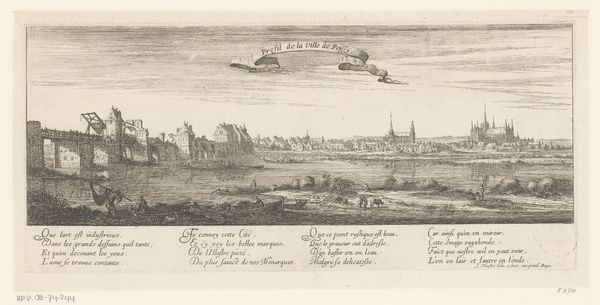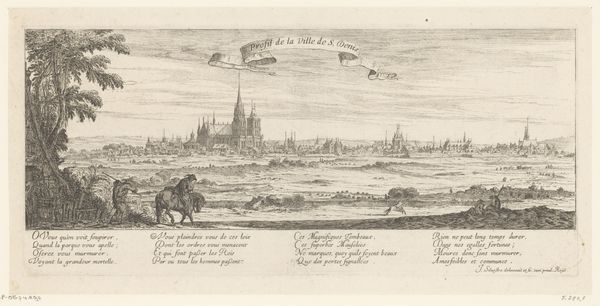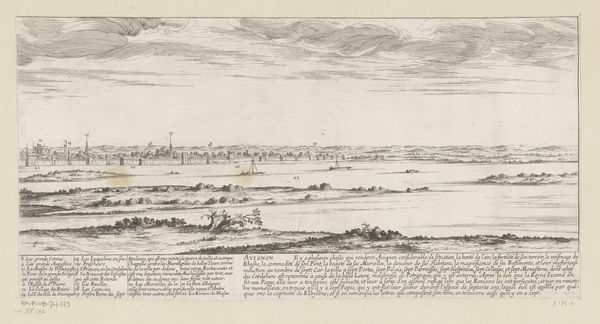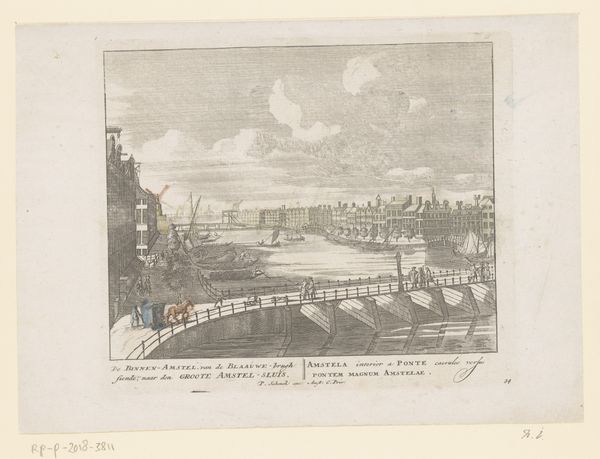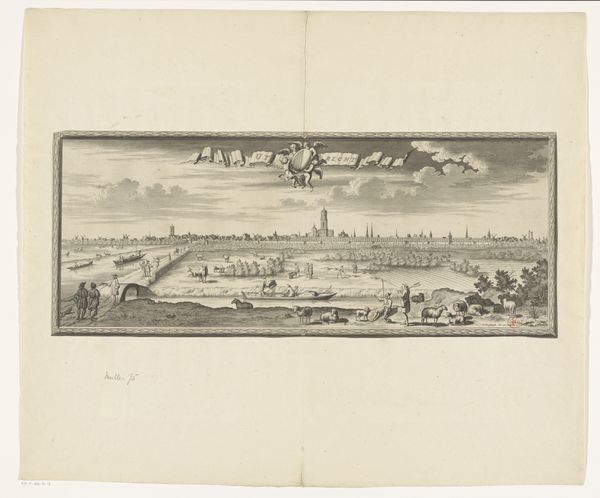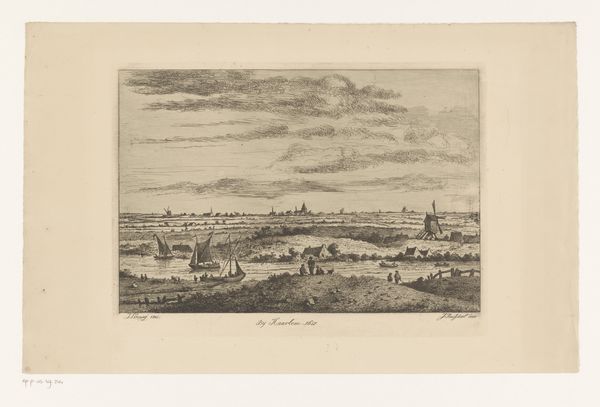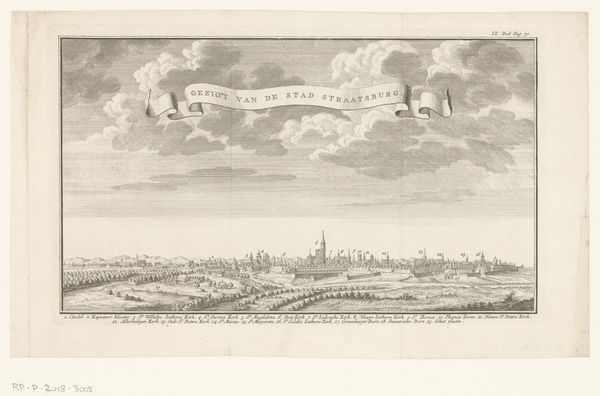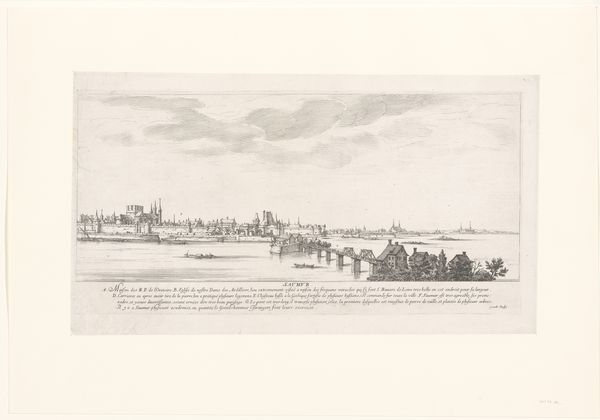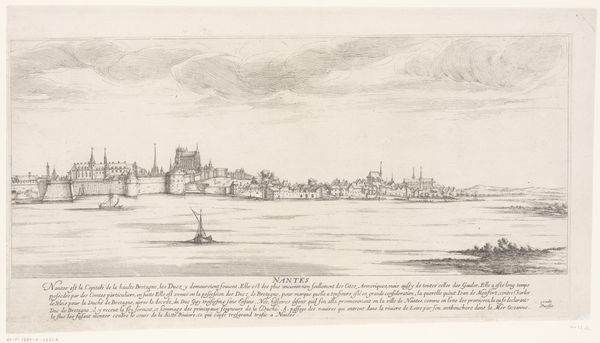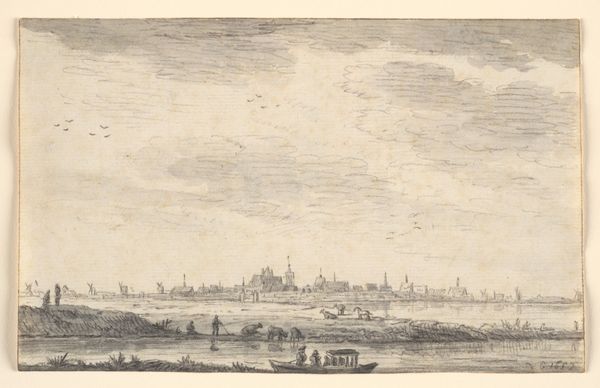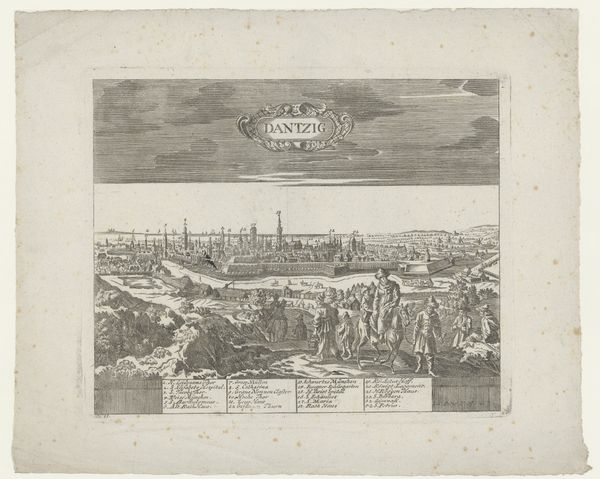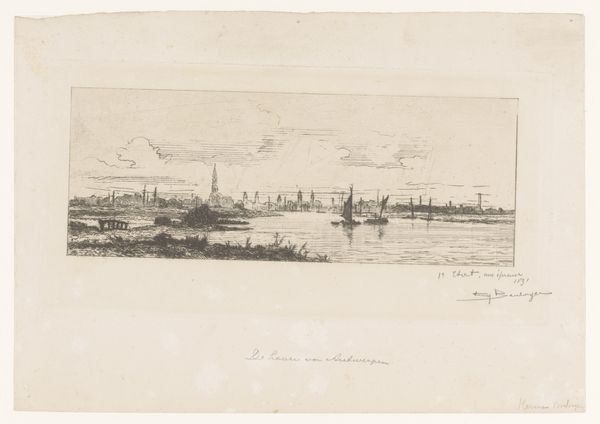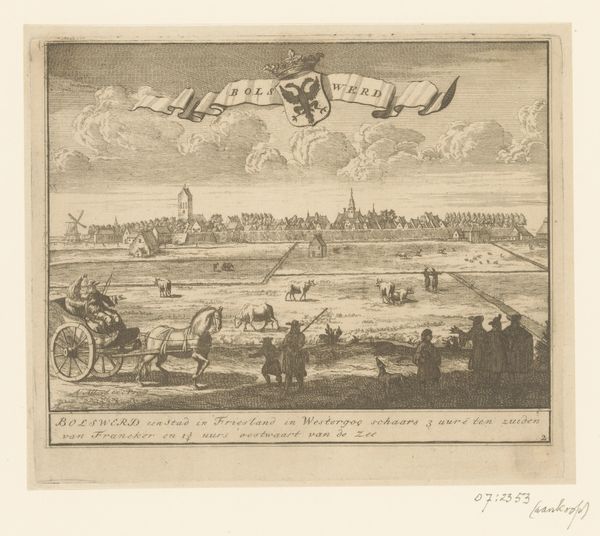
print, engraving
#
baroque
# print
#
old engraving style
#
landscape
#
cityscape
#
engraving
Dimensions: height 139 mm, width 320 mm
Copyright: Rijks Museum: Open Domain
Curator: Israel Silvestre's "Gezicht op Parijs," created between 1636 and 1691, offers us an engraved view of the city. It’s currently housed at the Rijksmuseum. Editor: It has an almost dreamlike quality. The monochrome palette softens the grand architecture, and those figures in the foreground appear so small against the vast cityscape. There's something melancholy about it, a sense of bygone days. Curator: Right. Silvestre, within his baroque aesthetic, used the engraving technique to meticulously depict Paris, placing emphasis on precise lines and detail. It’s less about pure artistic expression and more about documenting, archiving, and, perhaps, celebrating the expansion of Parisian urbanism under the Bourbon kings. Look closely at how the artist prioritized specific sites within Paris; he shows us labor. The marks that create these impressions took much labor, in many senses. Editor: Precisely, and we can consider what's highlighted and what's excluded from view. We're presented with this very specific perspective—a controlled gaze—that inherently carries a particular ideological framework. Silvestre presents Paris at this very critical point. You mention Bourbon expansion, it suggests stability, power, and, of course, privilege. And who do we see down at the waterside? Figures that speak more to labor as commodity. How might the artist's location at this specific time reflect his politics, too? Curator: Well, prints like these, and the networks of their distribution, often acted as both records and advertisements, solidifying an image of France as a hub of wealth, culture and power. Silvestre and others profited handsomely through these networks. What is striking to me is that printmaking itself was undergoing tremendous refinement at this period, influencing the artist's working methods to create these precise details. Editor: So, understanding this not only helps us examine social values within the context of the image but also acknowledges our roles as consumers and contributors of history. It isn’t merely a passive reflection but actively shapes how the city—and its power structures—are perceived, documented, and ultimately, remembered. Curator: Absolutely. These prints weren’t cheap, catering to a specific clientele eager to possess and circulate images of the rising center of power. We have to think about it circulating within Europe. What that suggests. Editor: Reflecting upon this print helps us re-evaluate these cityscapes—and how cities continue to play an active part in contemporary social and economic landscapes. Curator: It emphasizes just how intertwined art, labor, and capital become when constructing narratives through an artistic production, really allowing a critical look at material processes.
Comments
No comments
Be the first to comment and join the conversation on the ultimate creative platform.
